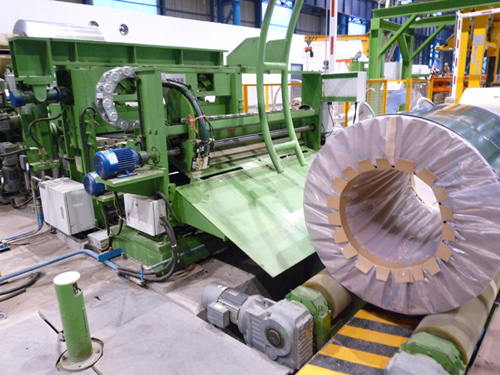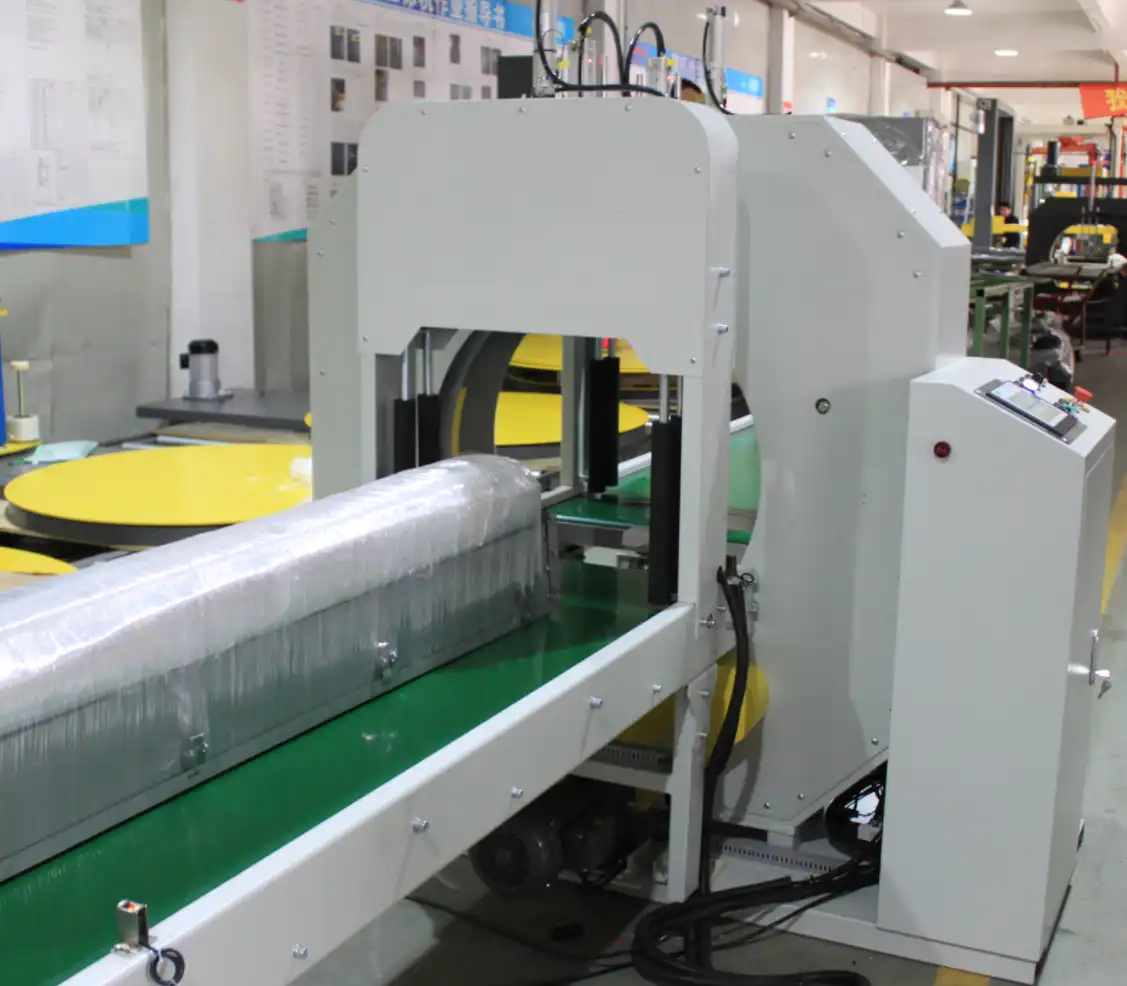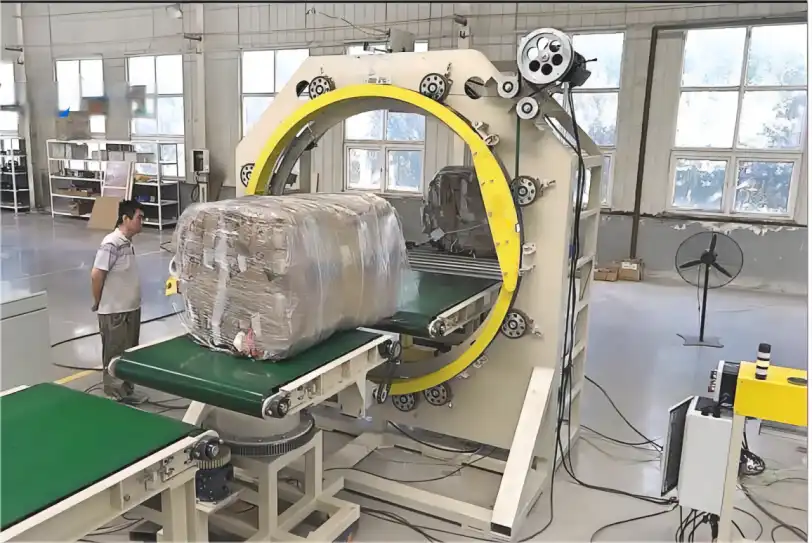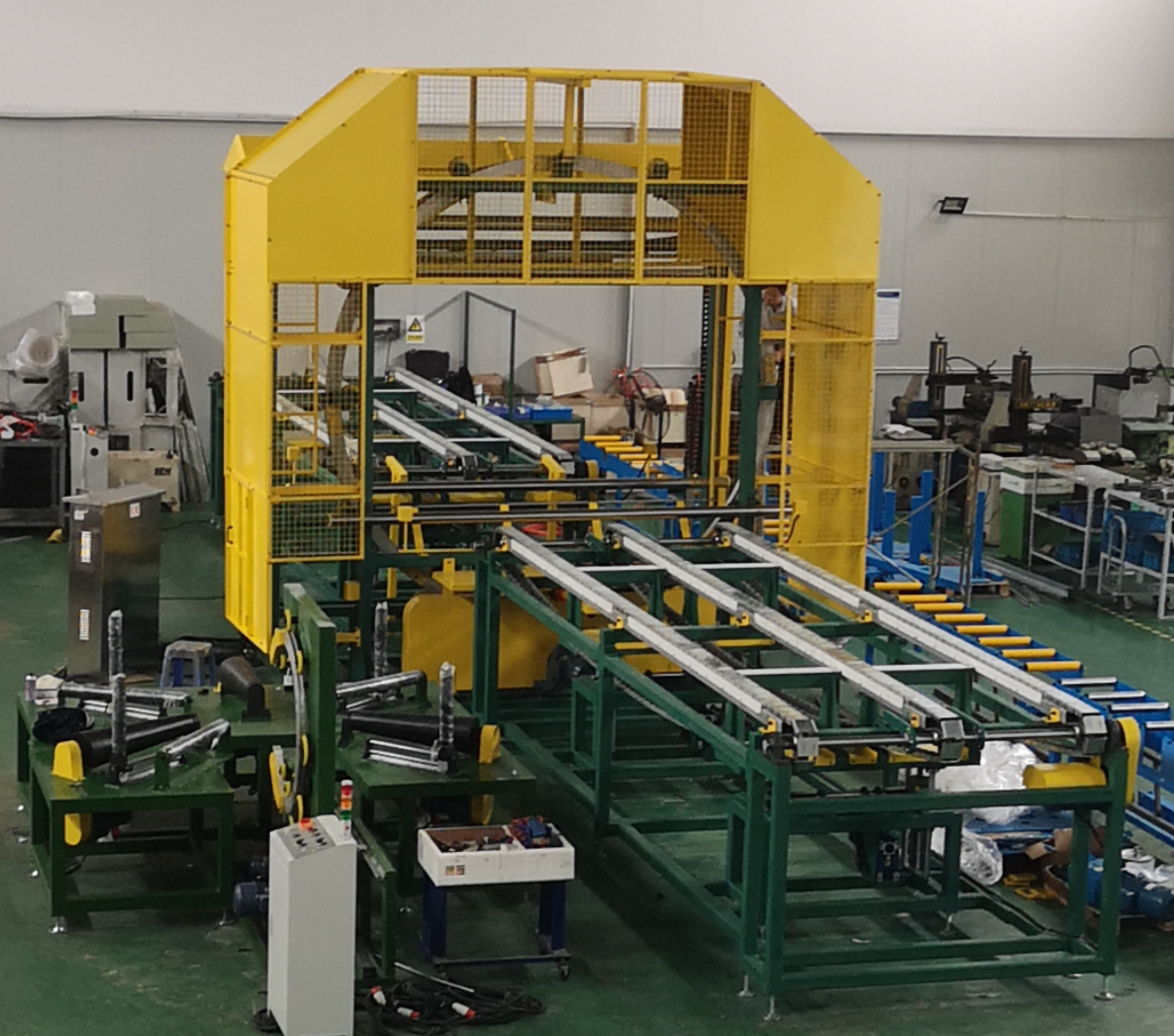The Role of Dunnage Bags in Preventing Coil Movement
Transporting heavy steel coils presents a significant challenge: preventing them from shifting during transit, which risks catastrophic damage and accidents. Inflatable dunnage bags are a critical solution, acting as void fillers to brace cargo, absorb impacts, and prevent the forward, rearward, and sideways movement of heavy steel coils within containers, trucks, and railcars. Their strategic placement transforms potential instability into a secure, unitized load.
The immense weight and cylindrical shape of steel coils make them prone to rolling and shifting. Without proper securement, the dynamic forces encountered during road, rail, or sea transit can cause coils to collide, resulting in costly damage or even devastating incidents. This article explores how dunnage bags address this specific challenge within the complex landscape of steel coil logistics and their role in a multi-layered securement strategy.
Preventing Transit Damage: The Void-Filling Power of Dunnage Bags
Transporting steel coils, especially via external logistics modes like road, rail, or containerized sea freight, inherently involves dynamic forces. Acceleration, deceleration, braking, cornering, and the pitching and rolling motions of ships all exert pressure on the cargo. These forces become particularly hazardous when voids exist between the coils themselves or between the coils and the transport unit’s walls. It’s in these voids that uncontrolled movement begins, leading to impacts, abrasion, and potential structural failure of the load securement.
Dunnage bags are specifically designed to occupy these empty spaces, providing a resilient cushion that conforms to the cargo’s shape and absorbs energy from transit forces. By filling voids, they eliminate the room for movement, effectively locking the coils in place and preventing damaging collisions or shifts. This is particularly vital for heavy items like steel coils where even minor movement can generate significant impact forces.

Beyond Lumber: Why Inflatable Dunnage Bags Are a Key Securement Tool
Historically, timber bracing and blocking were the primary methods for filling voids and securing cargo. While still used, they are labor-intensive, can be heavy, require specific cutting and fitting, and contribute to waste. Inflatable dunnage bags offer several compelling advantages, making them an increasingly preferred solution for securing steel coils in various transport modes.
Their function is straightforward yet highly effective: placed in the voids between cargo units or between the cargo and container/vehicle walls, they are inflated with air, expanding to fill the gap and exert pressure against the cargo, bracing it firmly. This creates a tight, unitized load that resists movement. The resilience of the air-filled bladder allows them to absorb shocks and vibrations during transit, preventing the transmission of damaging forces directly between coils.
Different types of dunnage bags are available, constructed from various materials and designed for different load weights and gap sizes. The source material highlights bags made from Kraft paper with an inner layer of woven PP cloth and a PA film inner bladder, combining strength, resilience, and quick inflation/deflation capabilities. Their typical size (1000mm wide and 2200mm in length as mentioned) indicates they are designed for substantial voids.
The material composition is critical for their performance and reusability. The Kraft paper exterior provides durability against abrasion from cargo surfaces, while the woven PP layer adds structural integrity to withstand bursting pressure. The PA film bladder ensures airtight inflation and reliable cushioning.
| Feature | Inflatable Dunnage Bag | Traditional Timber Blocking |
|---|---|---|
| Void Filling | Conforms to shape, fills irregular gaps | Requires precise cutting |
| Impact Absorption | Cushions and absorbs dynamic forces | Rigid, transmits impact |
| Application Speed | Quick inflation | Labor-intensive, slow |
| Weight | Lightweight | Heavy |
| Reusability | Some types reusable | Limited reusability |
| Ease of Removal | Quick deflation | Requires tools, labor |
| Surface Protection | Reduces abrasion compared to direct wood contact | Potential for surface marks |
| Waste Generation | Less waste | Significant wood waste |
| Cost-Effectiveness | More economical and efficient in many cases | Can be costly for labor/material |
For securing heavy steel coils, where movement is a significant risk, dunnage bags complement other securement methods like strapping and cradles by providing essential bracing and shock absorption within the transport space. They prevent the minor shifts that can accumulate into major problems, ensuring the load arrives intact.
External Transport Challenges: Where Dunnage Bags Make a Difference
Transporting steel coils across different modes – road, rail, and sea – each presents unique securement challenges. The consistent requirement across all modes, however, is to prevent movement of the heavy, dense cargo. Dunnage bags play a specific role in supplementing the primary securement methods tailored to each mode.
In the complex world of external logistics for steel coils, preventing movement is paramount. Dunnage bags provide crucial void filling and bracing capabilities that complement traditional methods like strapping, chains, and cradles, absorbing transit shocks and preventing shifts within trucks, railcars, and shipping containers, thus safeguarding both the cargo and transport unit integrity.

Securing the Journey: Integrating Dunnage Bags into Multimodal Logistics
Each mode of transport for steel coils has specific securement requirements, heavily influenced by the forces encountered and the design of the transport vehicle. Dunnage bags are a versatile tool that can be integrated into the securement plans for road, rail, and particularly, sea transport.
-
Road Transport: Steel coils on flatbed trucks, even when loaded into cradles or on dunnage, can shift, especially during hard braking or sharp turns. Heavy-duty straps or chains provide primary restraint. Dunnage bags can be used to fill voids between coils loaded side-by-side ("eye to side") or between coils and the trailer walls. They add an extra layer of security by preventing coils from impacting each other or the vehicle structure if primary restraints experience slack or minor stretch under dynamic loads. For coils loaded "eye to the sky," which are less prone to rolling but can still slide or tip, dunnage bags can be placed strategically to prevent lateral movement against the trailer walls.
-
Rail Transport: Specialized "Coil Cars" are designed with integrated troughs or cradles. While these provide substantial primary securement, some movement can still occur, especially with variations in coil size or load configuration within standard gondola cars sometimes used. Dunnage bags can be inflated within the remaining voids to tighten the load, preventing impacts caused by the significant longitudinal forces experienced in rail transport (slack action, braking). The source notes that standard gondola cars often require extensive dunnage, and airbags can be a part of this supplementary securement strategy.
-
Maritime Shipping: Containerized transport of heavy coils poses unique challenges due to concentrated weight and the forces experienced at sea (pitching, rolling). As highlighted in the source material and specialized guidelines (like Hapag-Lloyd, CMA CGM, MSC), coils must be placed on bedding beams and secured in robust cradles within the container. Even with careful cradling and lashing, minor voids can remain, and dynamic forces are intense. Dunnage bags (as mentioned in the source) are specifically recommended to fill these void spaces, preventing the coil/cradle assemblies from shifting and impacting the container walls. In break bulk shipping, where coils are stowed directly in holds, dunnage bags can supplement traditional timber bracing and lashing by filling voids between layers or against bulkheads, adding stability to the stow and absorbing energy from hull movements. The harsh marine environment also emphasizes the need for securement that maintains integrity despite potential moisture or temperature fluctuations, which dunnage bags are designed to do.
By strategically placing and inflating dunnage bags, logistics professionals can significantly enhance the stability of steel coil shipments across all modes, reducing the risk of costly damage and ensuring safer transit. Their ease of use and ability to conform to irregular shapes make them a flexible addition to a comprehensive securement plan.
A Multi-Layered Approach: Dunnage Bags within Total Securement
Preventing steel coil movement isn’t a single-step process; it requires a combination of methods working in concert. Dunnage bags are a vital component of this multi-layered securement strategy, complementing other techniques and contributing to the overall integrity of the cargo during transit. Understanding their place within this broader system is key to effective load securing.
Securing heavy steel coils for transit is a multi-faceted task involving various elements working together. Dunnage bags are essential components in this system, specifically addressing void filling and impact absorption, which supports the primary restraints like strapping, chains, and specialized cradles, creating a robust defense against the dynamic forces encountered during road, rail, and sea transport.

The Securement Ecosystem: Strapping, Blocking, and Dunnage
A comprehensive approach to steel coil securement integrates several techniques, each addressing a different aspect of load stability. Dunnage bags primarily focus on filling voids and cushioning, but they rely on other elements to provide foundational support and primary restraint.
-
Primary Restraints: Steel or high-strength polyester strapping and chains are used to tie the coil directly to the transport vehicle’s lashing points or the support structure (like a cradle or pallet). These provide the main force resisting forward, rearward, and vertical movement. The number and strength of tie-downs are often dictated by regulations, such as the US FMCSA’s §393.120, which mandates specific requirements based on coil weight and orientation. Edge protectors are crucial where straps pass over sharp edges.
-
Blocking and Support: Timber dunnage, coil cradles, or specialized racks provide foundational support, preventing the coil from rolling ("eye to side") or sliding ("eye to the sky"). These structures also help distribute the concentrated weight of the coil over a larger area of the trailer, railcar floor, or container floor (especially with bedding beams in containers). Friction mats placed beneath the dunnage or cradles further enhance stability by preventing sliding.
-
Void Filling and Bracing: This is where dunnage bags are indispensable. They are placed in the spaces between coils, between columns of stacked coils, or between the cargo and the transport unit walls. Once inflated, they exert pressure outwards, bracing the entire load and preventing it from shifting into available voids during transit forces. They fill the gaps that strapping alone cannot.
-
Packaging and Internal Integrity: While not strictly load securement to the vehicle, the internal integrity of the coil itself, maintained by proper banding (circumferential and through-eye strapping), is foundational. Packaging materials like wraps, edge protectors, and VCI papers also contribute to overall stability and protection against surface damage, which could compromise the effectiveness of external securement if the coil’s shape is distorted.
The effectiveness of dunnage bags is amplified when used correctly within this system. They are not a substitute for adequate strapping or blocking, but rather a critical supplement that eliminates damaging movement within the load. Proper technique involves selecting the correct size and strength of bag for the void and load, positioning it correctly (fully in the void), and inflating it to the recommended pressure to achieve optimal bracing force without over-inflating and potentially damaging the cargo or container.
| Securement Element | Primary Function | Application for Steel Coils | Complementary Role with Dunnage Bags |
|---|---|---|---|
| Strapping/Chains | Primary restraint (Fwd/Rwd/Vert movement) | Over/through the eye, or around the coil base, secured to tie-downs | Holds load against dunnage bags, preventing large shifts dunnage cannot restrain alone. |
| Blocking/Cradles | Foundational support, prevent rolling/sliding | Timber dunnage under coil, shaped cradles, coil racks | Provides stable base; dunnage bags brace between blocked units. |
| Dunnage Bags | Void filling, bracing, impact absorption | Between coils, between load and wall/bulkhead | Fills gaps remaining after blocking/strapping, prevents minor, damaging movement. |
| Friction Mats | Increase friction, prevent sliding | Under dunnage, cradles, or coil when "eye to sky" | Enhances effectiveness of bracing by reducing initial sliding potential. |
| Edge Protectors | Protect edges from damage and strapping wear | On coil edges where strapping crosses | Protects coil integrity, which is necessary for overall load stability. |
The proper use of dunnage bags requires training and adherence to established best practices. Factors like the size and strength rating of the bag, the size of the void, the weight of the cargo, and the mode of transport all influence selection and inflation pressure. Inflatable dunnage bags are a sophisticated component, offering significant benefits when deployed correctly as part of a comprehensive cargo securement plan for steel coils.
The Role of Technology in Enhancing Load Securing
Just as automation and advanced systems are transforming internal coil handling, technology is also impacting external load securement practices, including the use of dunnage bags. Innovations in materials, inflation equipment, and potentially even monitoring are enhancing the efficiency and effectiveness of securing heavy cargo like steel coils for transit.
Technology plays an increasing role in optimizing load securing for steel coils. This includes advancements in dunnage bag materials and inflation systems for greater efficiency and reliability, as well as integration with broader logistics management platforms to ensure compliance and track securement practices. Dunnage bags themselves leverage material science for strength and resilience, while advanced inflation tools streamline their deployment, ensuring proper bracing forces are applied consistently to prevent coil movement during transit.

The development of dunnage bags themselves represents a technological advancement over simple timber. Modern bags utilize multi-layer constructions combining durable plastics like woven polypropylene for strength and abrasion resistance, Kraft paper for stability, and low-permeability films like polyamide (PA) for the inner bladder to retain air pressure effectively over long journeys. Different strength grades are available, rated to withstand specific pressures and restrain different weights, allowing for selection based on the cargo and transport requirements.
Inflation technology has also evolved. The source mentions a "fast-inflation gun" with features like a finger-free design and air pressure adjustment. These tools make the process quicker, more ergonomic, and help ensure bags are inflated to the correct pressure. Consistent, accurate inflation is crucial; under-inflated bags won’t provide adequate bracing, while over-inflation can damage the cargo or the container structure. Further technological integration could involve smart inflation tools that monitor pressure digitally or systems that track which voids have been filled.
Beyond the bags themselves, technology aids load securement through better planning and monitoring. Logistics software and load planning tools can help determine the optimal placement and number of dunnage bags based on cargo dimensions, weight, and transport unit characteristics. Furthermore, integrating securement documentation (photos, reports) into digital logistics platforms enhances accountability and provides valuable data for continuous improvement. While fully automating the placement and inflation of dunnage bags for diverse, heavy cargo like steel coils remains a complex challenge, ongoing advancements in robotics and vision systems could eventually play a role in high-volume, standardized operations. The trend is towards making the securement process more efficient, reliable, and verifiable through technological aids.
Conclusion
Safely and efficiently transporting heavy steel coils is a complex undertaking demanding specialized equipment and rigorous procedures. Preventing movement during transit is paramount to avoid costly damage and dangerous accidents. While a multi-layered approach involving strapping, blocking, and cradles forms the core of securement, inflatable dunnage bags are indispensable tools for filling voids and absorbing dynamic forces. Their ability to conform to cargo shapes and cushion impacts makes them a superior alternative to traditional bracing in many scenarios, significantly enhancing the stability of shipments across road, rail, and sea. As part of a comprehensive strategy that includes appropriate packaging, careful handling, and adherence to regulations, dunnage bags play a critical role in ensuring that valuable steel coils arrive at their destination in optimal condition, safeguarding quality and contributing to supply chain efficiency, much like advanced solutions found in a modern coil packing line. Continuous advancements in materials and technology are further enhancing their effectiveness in this challenging logistical environment.










